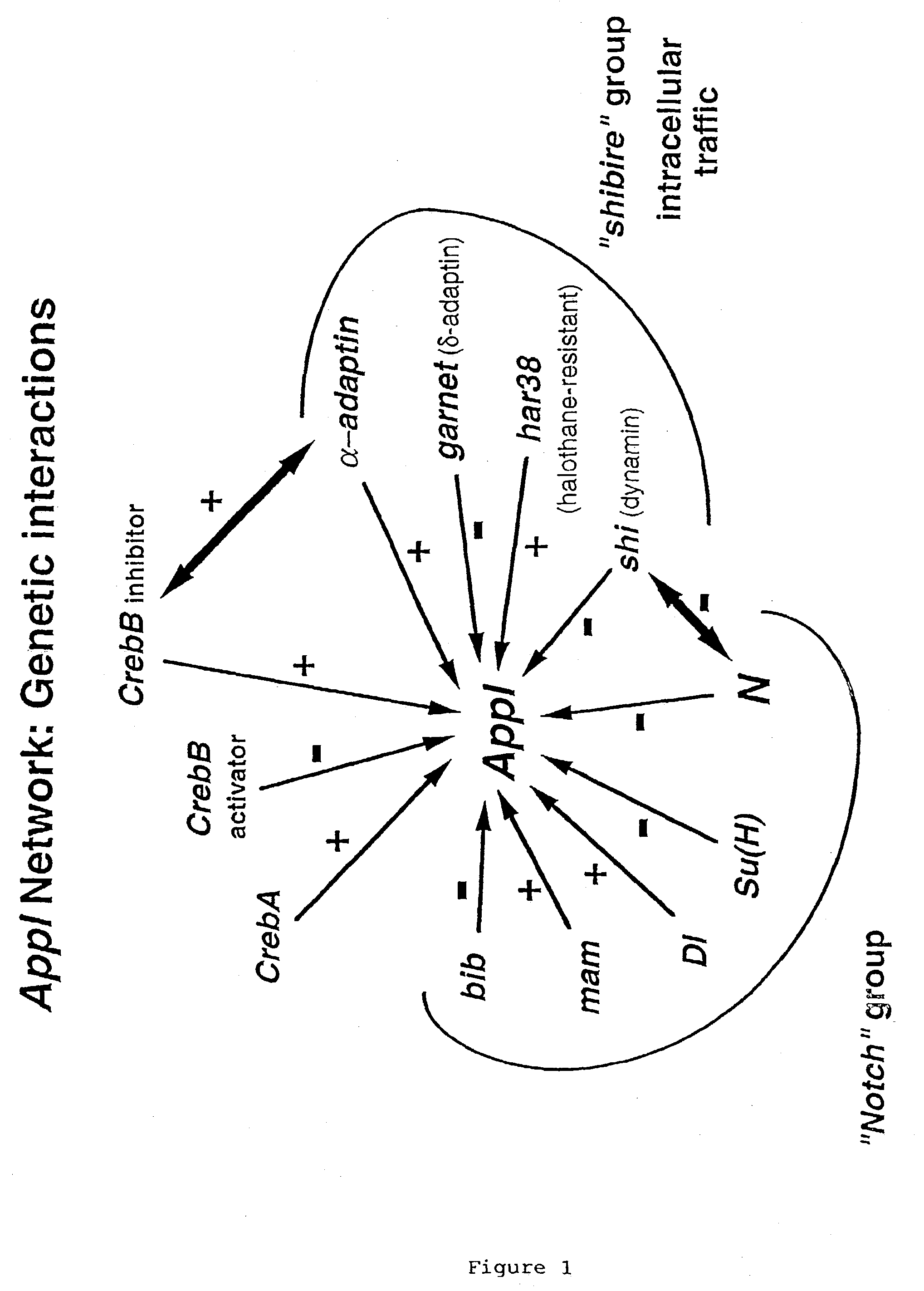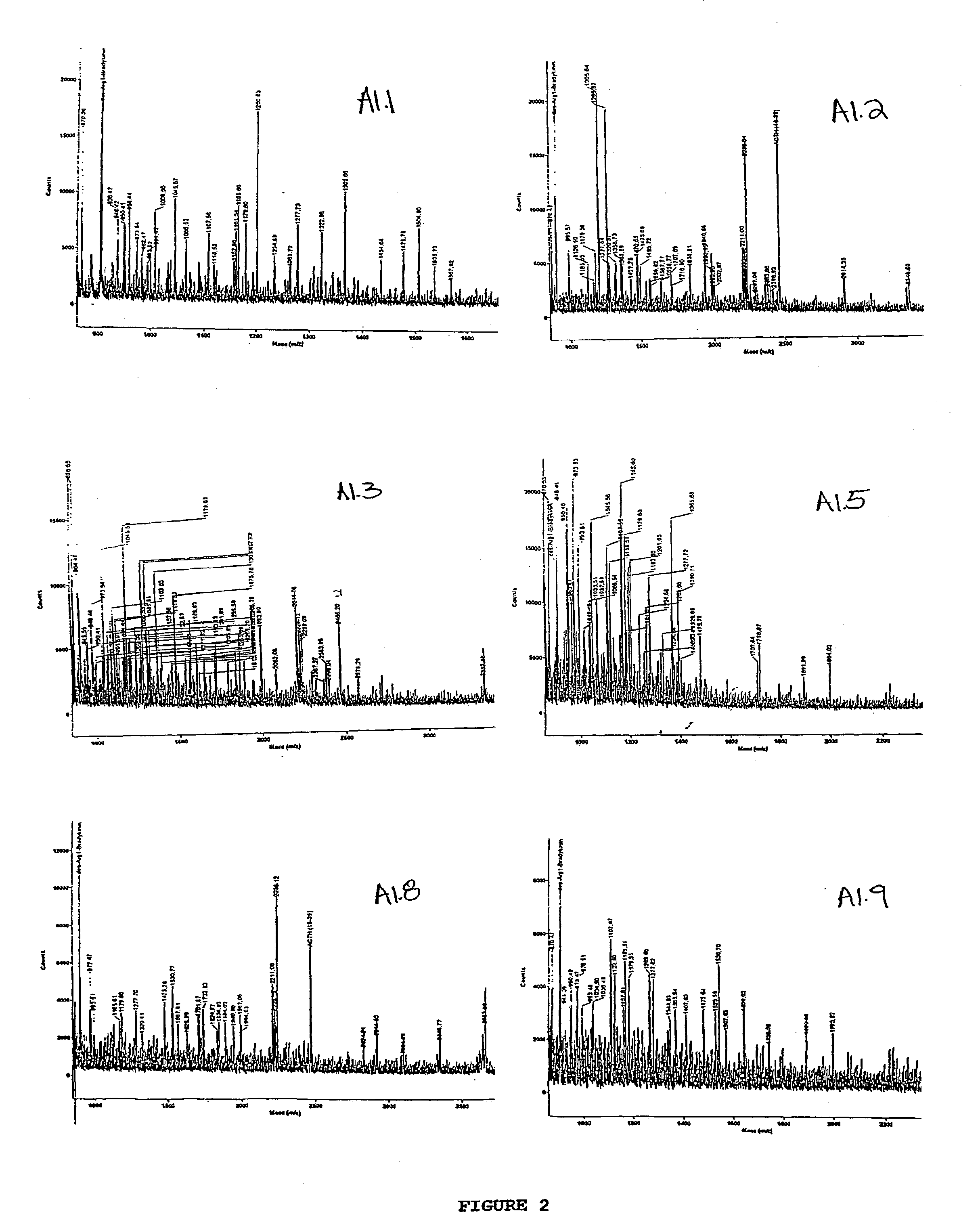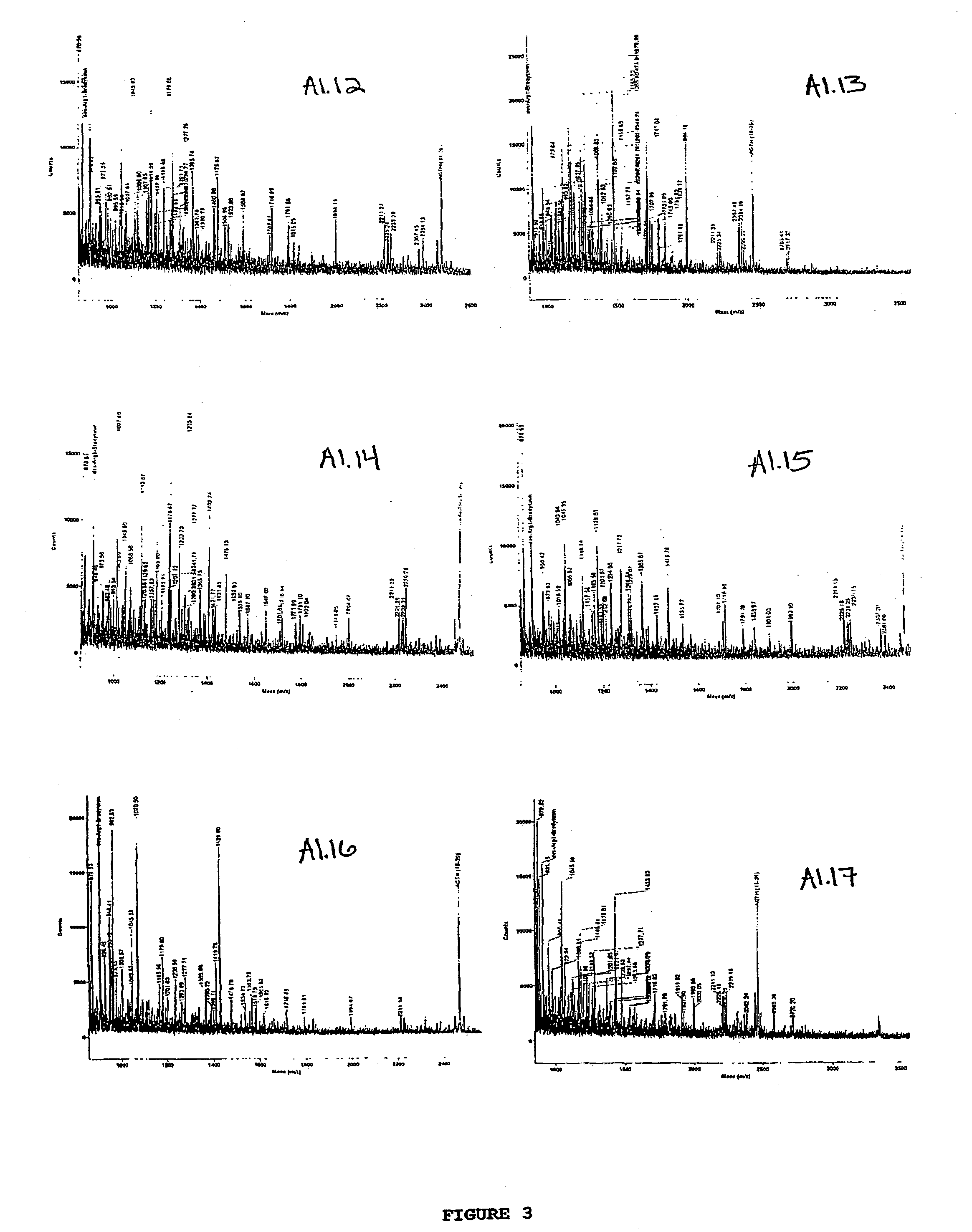Method for functional mapping of an alzheimer's disease gene network and for identifying therapeutic agents for the treatment of alzheimer' s disease
a functional mapping and gene network technology, applied in the field of gene network functional mapping of alzheimer's disease and for identifying therapeutic agents for the treatment of alzheimer's disease, can solve the problems of unfavorable app development, impaired memory, thinking and behavior, and no medical treatment available to cure or stop the progression of alzheimer's disease. normal function is currently unknown
- Summary
- Abstract
- Description
- Claims
- Application Information
AI Technical Summary
Benefits of technology
Problems solved by technology
Method used
Image
Examples
example i
Gene-Network Mapping of Genes Acting in the Same Network as the Drosophila Amyloid Protein Precursor-Like Gene (Appl)
[0088] This example describes identification of genes acting within the same genetic network as Appl, the Drosophila homolog of human amyloid protein precursor (APP).
A. Interaction of Appl with X Chromosome Deficiencies
[0089] Male flies bearing a chromosome that lacks the Appl gene (w Appd; Kalpana White, Brandeis University, Waltham, MS), which is not required for viability or for most other functions in Drosophila (Luo et al., supra, 1992), were crossed with a series of FM7 virgin females bearing individual deficiencies of the X chromosome, “Df(1)s”. This set of deficiencies altogether covers roughly 70% of the X chromosome, nearly 15% of the entire genome and thus serves as a representative sample of the genome. In each case, the number and genotype of female adults emerging from each cross were scored, and the viability of the test genotype relative to sibling...
example ii
Analysis of Differences in Gene Expression in Appld Versus Wild Type Flies
[0097] This example demonstrates the use of differential display, DNA microarray analysis and 2D gel electrophoresis to identify genes involved in an Alzheimer's disease gene network.
A. Differential Display Analysis
[0098] Differential display analysis of RNA isolated from adult heads of w Appld vs. wild type (w) siblings was used to identify genes with increased or decreased expression in Appld. Briefly, 20 fly heads were homogenized in TRIzol (Life Technologies, Inc., Frederick, MD) and extracted according to the manufacturer's instructions. Differential display of mRNA was performed essentially as described in Cirelli and Tononi, Mol. Brain Res. 56:293-305 (1998). About 38 transcripts were identified with expression levels altered in Appld flies. Of these, 16 had increased expression, and 22 had decreased expression in Appld flies relative to Appl+ flies.
[0099] Sequence analysis using the BLAST program ...
example iii
Genetic and Behavioral Analysis of Loci with Differing Expression in Appld Flies
[0106] This example describes the genetic analysis of loci that exhibit altered expression levels in Appld.
A. Genetic Analysis of Genes Identified by Expression Analysis
[0107] Genes with an altered expression level in Appld flies were analyzed phenotypically for an interaction with the Appl network. Available mutants for the genes identified by expression analysis were obtained and crossed with Appld flies. The various progeny classes were scored for viability as described above.
[0108] The dynamin-encoding shibire locus is on the X chromosome at salivary chromosome band 14A1. A chromosomal deficiency including 14A1, Df(1)sd72b, showed a moderate decrease in viability with Appld (see Table 1). Two temperature-sensitive alleles of shibire were tested with Appld, and both showed reductions in viability that were temperature-sensitive (see Table 3).
[0109] Two other mutants in genes whose products are i...
PUM
| Property | Measurement | Unit |
|---|---|---|
| morphology | aaaaa | aaaaa |
| nucleic acid | aaaaa | aaaaa |
| lifetime | aaaaa | aaaaa |
Abstract
Description
Claims
Application Information
 Login to View More
Login to View More - R&D
- Intellectual Property
- Life Sciences
- Materials
- Tech Scout
- Unparalleled Data Quality
- Higher Quality Content
- 60% Fewer Hallucinations
Browse by: Latest US Patents, China's latest patents, Technical Efficacy Thesaurus, Application Domain, Technology Topic, Popular Technical Reports.
© 2025 PatSnap. All rights reserved.Legal|Privacy policy|Modern Slavery Act Transparency Statement|Sitemap|About US| Contact US: help@patsnap.com



